pytorch基础

import torch import time a = torch.randn(10000, 1000)#要有空格 b = torch.randn(1000, 2000)#1000行,2000列的矩阵 t0 = time.time() c = torch.matmul(a, b)#CPU模式的矩阵乘法 t1 = time.time() print(a.device, t1-t0, c.norm(2)) cpu 0.534600019454956 tensor(140360.3125
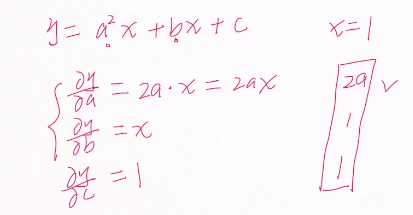
#自动求导数 import torch import time from torch import autograd x = torch.tensor(1.) a = torch.tensor(1., requires_grad=True)#a的初始值为1 b = torch.tensor(2., requires_grad=True) c = torch.tensor(3., requires_grad=True) y = a**2*x+b*x+c print('before: ', a.grad, b.grad, c.grad) grads = autograd.grad(y, [a, b, c])#求导 print('after: ', grads[0], grads[1], grads[2]) before: None None None after: tensor(2.) tensor(1.) tensor(1.)
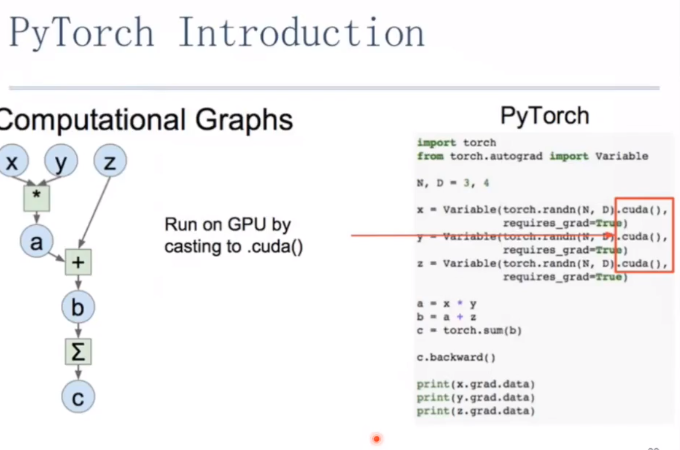
import torch from torch.autograd import Variable N,D = 3, 4 x = Variable(torch.randn(N,D), requires_grad = True) #放在GPU上跑 x = Variable(torch.randn(N,D).cuda(), requires_grad = True) y = Variable(torch.randn(N,D), requires_grad = True) z = Variable(torch.randn(N,D), requires_grad = True) a = x * y b = a+z c = torch.sum(b) c.backward()#计算所有中间变量的导数 print(x.grad.data) print(y.grad.data) print(y.grad.data)
tensor([[-0.6182, 1.5300, -1.6665, -0.9114],
[ 0.2941, 0.3281, -0.0590, -2.4240],
[ 0.9295, -0.3222, -0.6462, 0.7567]])
tensor([[ 0.2332, 0.1874, 1.6639, 0.1480],
[ 0.9735, -1.0833, 1.4088, 0.2536],
[ 0.5914, 0.3669, -0.4866, -1.6782]])
tensor([[ 0.2332, 0.1874, 1.6639, 0.1480],
[ 0.9735, -1.0833, 1.4088, 0.2536],
[ 0.5914, 0.3669, -0.4866, -1.6782]])
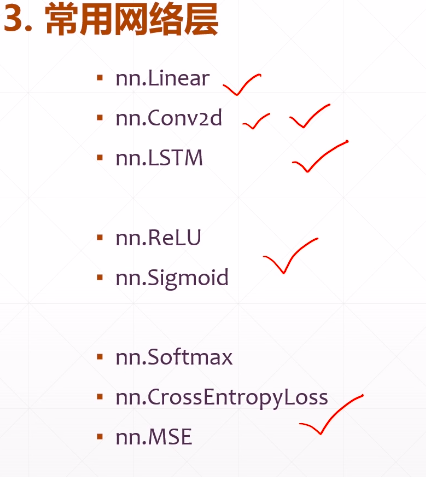
梯度下降 可以求极小值

核心;x = x -f'(x)×学习率(导数)#学习率为了更 精确的预测 在f'(x)=0处抖动,因为=0也会有误差 极小值
一般只要预测值是连续的,都叫回归问题
逻辑回归:用于预测属于某类的概率 (预测值在[0,1]),从这个角度理解,他就是2分类预测
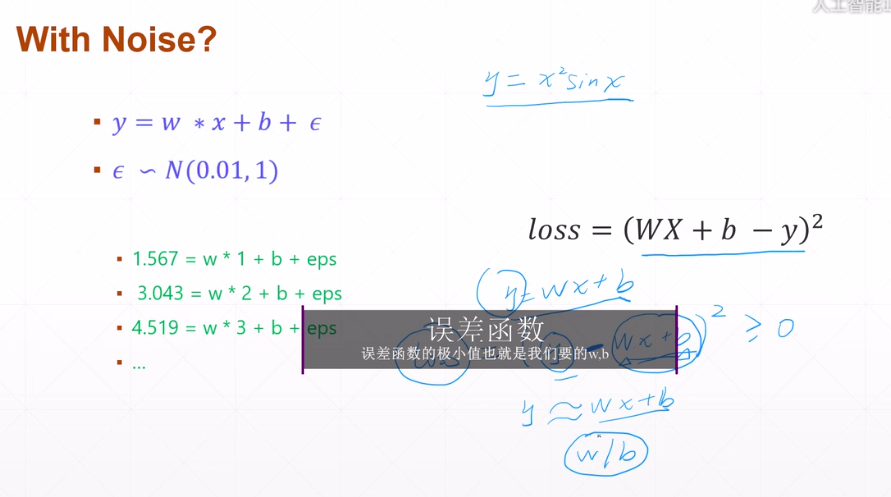

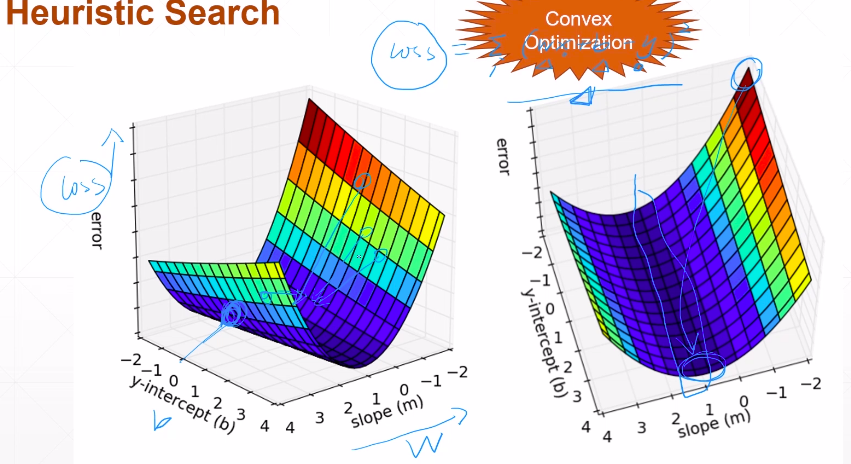
w,b在变动

可参考这个博客https://blog.csdn.net/fanjianhai/article/details/103165530
import numpy as np # y = wx + b def compute_error_for_point(b, w, points): total_error = 0 for i in range(0, len(points)): x = points[i, 0] y = points[i, 1] total_error += (y - (w * x + b)) ** 2 return total_error / float(len(points)) def step_grad(b_current, w_current, points, learn_rate): b_grad = 0 w_grad = 0 N = float(len(points)) for i in range(0, len(points)): x = points[i, 0] y = points[i, 1] # grad_b = 2(wx+b-y) b_grad += -(2/N) * (y - ((w_current * x) + b_current)) w_grad += -(2/N) * x * (y - ((w_current * x) + b_current)) # grad_w = 2(wx+b-y)*x 求导数 new_b = b_current - (learn_rate * b_grad) new_w = w_current - (learn_rate * w_grad) return [new_b, new_w] def gradient_descent(points, start_b, start_w, learn_rate, num_iterator): b = start_b w = start_w for i in range(num_iterator): b, w = step_grad(b, w, np.array(points), learn_rate) return [b, w] def run(): points = np.genfromtxt("data.csv", delimiter=",") learn_rate = 0.0001 init_b = 0 # initial y-intercept guess init_w = 0 # initial slope guess num_iterator =1000 print("Startinrg gradient descent at b = {0}, w = {1}, error = {2}" .format(init_b, init_w, compute_error_for_point(init_b, init_w, points)) ) print("Running...") [b, w] = gradient_descent(points, init_b, init_w, learn_rate, num_iterator) print("After {0} iterations b = {1}, w= {2}, error = {3}". format(num_iterator, b, w, compute_error_for_point(b, w, points)) ) if __name__ == '__main__':#name 前后都是__ run()

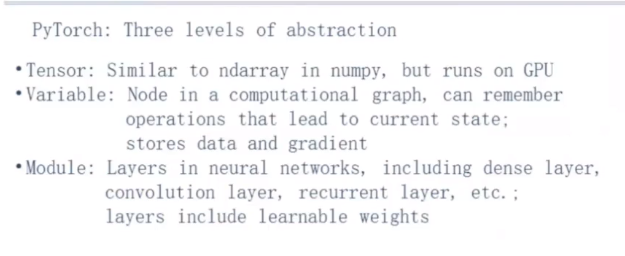

forawrd :给我一个值,输出是什么
backward:算出所给值的梯度


model就像一个黑箱子

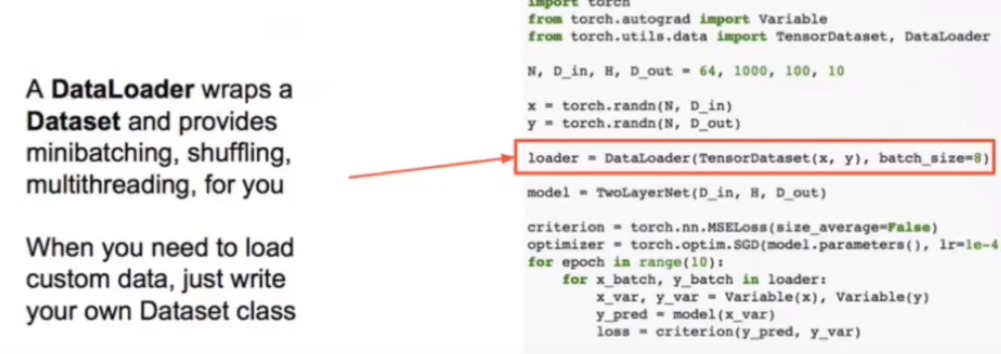

pytorch 和 tensorflow的区别
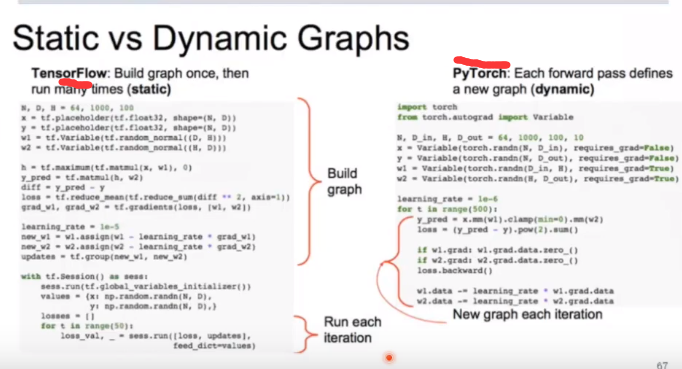
static vs dynamic
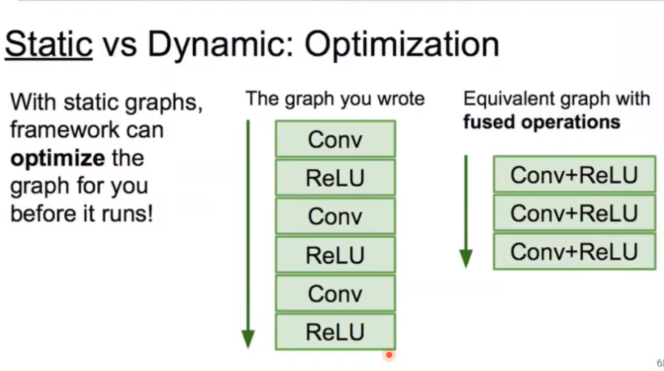
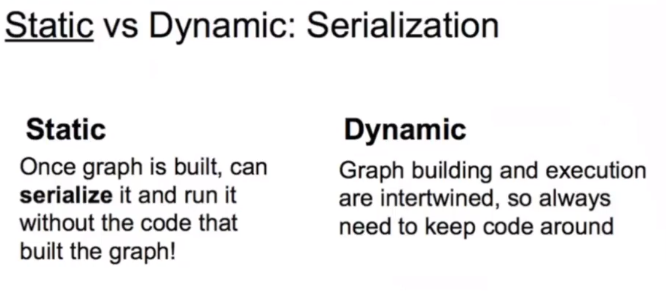
S 图建好后就不会再变了,只是运行不同的数据
D 网络的结构依赖数据
下面举个例子
条件语句
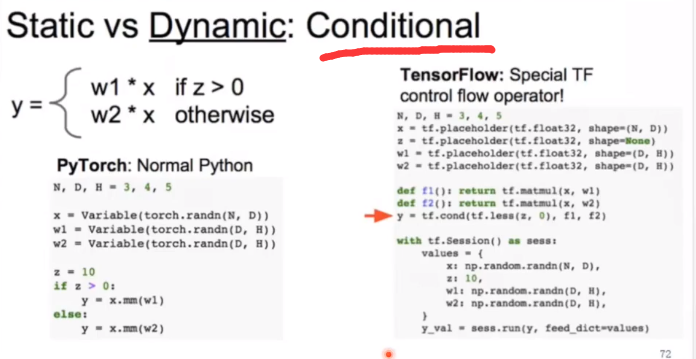
循环语句
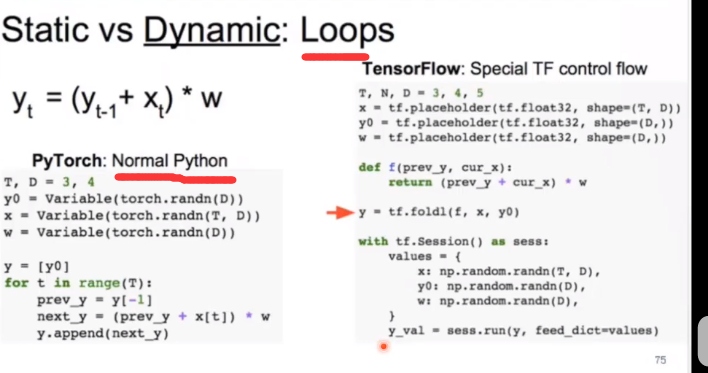
动态图应用

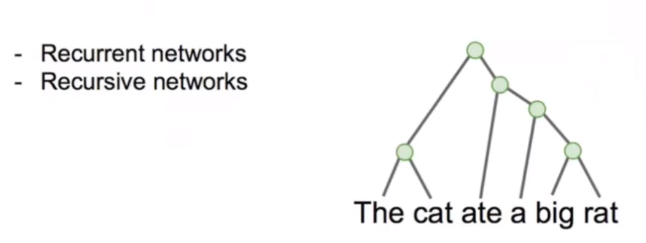
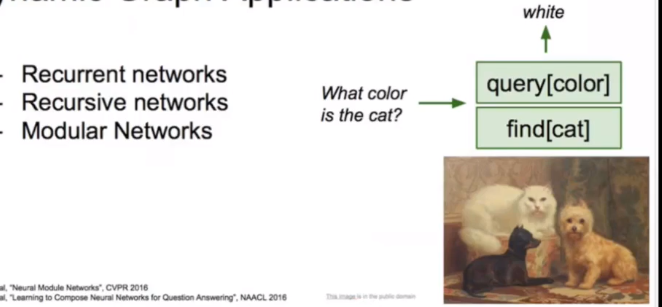
# a = [1,2,3,4] # b =2 # b = torch.tensor(b) # print(b) # print(a[-b]) # print(a[-1]) tensor(2) 3 4 index = [1,2] a = torch.randn(2,4,3,3) print(a) b = a[:,index,:,:] print("b...:") print(b) print("b[0] : ") print(b[0,:,:,:]) print(b.shape)
tensor([[[[ 0.2459, 0.6848, 0.6760], [-0.4188, 1.0681, -0.2383], [-0.9828, -1.1747, 0.3324]], [[ 0.6581, -0.9526, 0.7707], [-2.2539, 0.4771, -0.3570], [ 0.6010, -1.3780, -0.6772]], [[ 0.3594, 1.2516, -0.2323], [-0.2046, 0.8003, 0.6854], [-0.6111, 0.6822, 0.7537]], [[-1.3420, -0.6598, 0.6166], [ 0.8173, 1.1564, 0.1675], [-1.4180, 1.2084, 0.3865]]], [[[-0.7158, 0.1544, -0.2652], [-0.4343, -1.0831, 2.3954], [-0.0833, 0.0873, 0.0119]], [[ 0.4938, -0.2763, 0.3849], [ 1.7344, 0.3378, 0.0441], [-1.5186, -0.3244, 0.6782]], [[-0.3352, 1.4274, -0.3388], [ 1.2715, 0.0174, 2.0127], [ 0.4551, 0.5362, -0.1565]], [[ 0.1222, 0.0120, -0.8316], [ 0.2476, 1.4280, 0.3954], [-0.6422, -0.7224, -0.5245]]]]) b...: tensor([[[[ 0.6581, -0.9526, 0.7707], [-2.2539, 0.4771, -0.3570], [ 0.6010, -1.3780, -0.6772]], [[ 0.3594, 1.2516, -0.2323], [-0.2046, 0.8003, 0.6854], [-0.6111, 0.6822, 0.7537]]], [[[ 0.4938, -0.2763, 0.3849], [ 1.7344, 0.3378, 0.0441], [-1.5186, -0.3244, 0.6782]], [[-0.3352, 1.4274, -0.3388], [ 1.2715, 0.0174, 2.0127], [ 0.4551, 0.5362, -0.1565]]]]) b[0] : tensor([[[ 0.6581, -0.9526, 0.7707], [-2.2539, 0.4771, -0.3570], [ 0.6010, -1.3780, -0.6772]], [[ 0.3594, 1.2516, -0.2323], [-0.2046, 0.8003, 0.6854], [-0.6111, 0.6822, 0.7537]]]) torch.Size([2, 2, 3, 3])






【推荐】国内首个AI IDE,深度理解中文开发场景,立即下载体验Trae
【推荐】编程新体验,更懂你的AI,立即体验豆包MarsCode编程助手
【推荐】抖音旗下AI助手豆包,你的智能百科全书,全免费不限次数
【推荐】轻量又高性能的 SSH 工具 IShell:AI 加持,快人一步
· go语言实现终端里的倒计时
· 如何编写易于单元测试的代码
· 10年+ .NET Coder 心语,封装的思维:从隐藏、稳定开始理解其本质意义
· .NET Core 中如何实现缓存的预热?
· 从 HTTP 原因短语缺失研究 HTTP/2 和 HTTP/3 的设计差异
· 分享一个免费、快速、无限量使用的满血 DeepSeek R1 模型,支持深度思考和联网搜索!
· 基于 Docker 搭建 FRP 内网穿透开源项目(很简单哒)
· ollama系列01:轻松3步本地部署deepseek,普通电脑可用
· 25岁的心里话
· 按钮权限的设计及实现